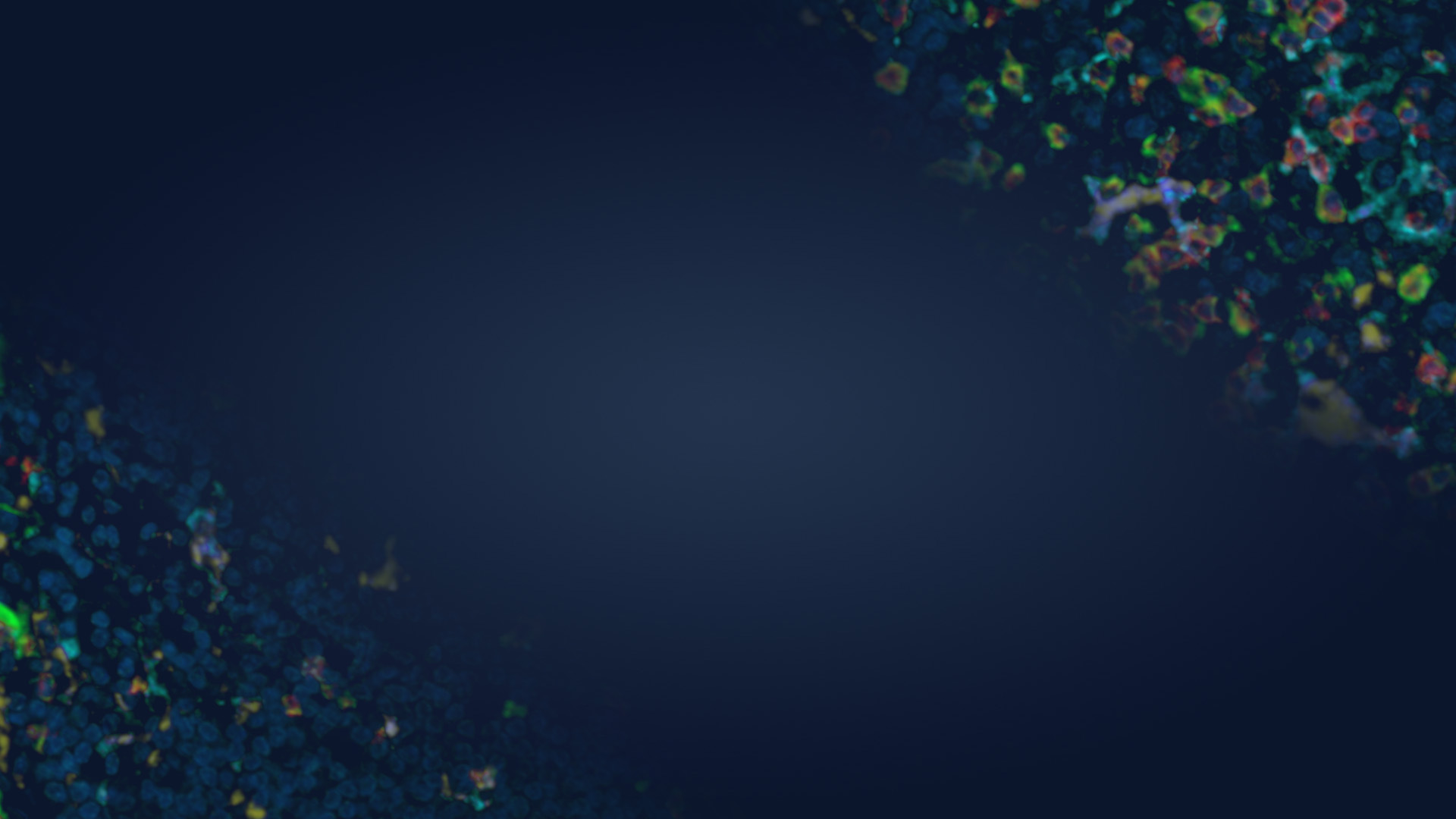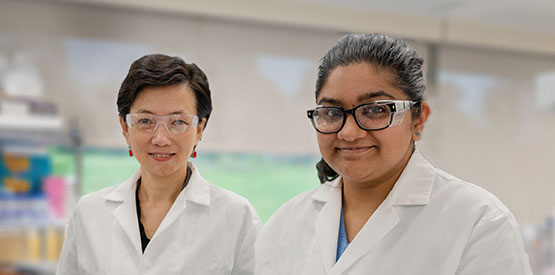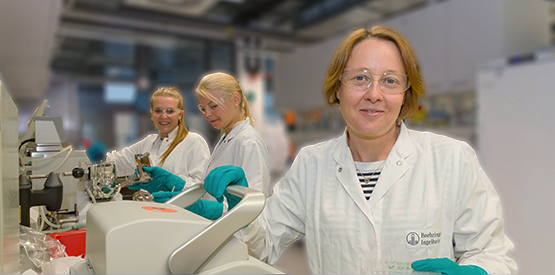Modeling human tertiary lymphoid structure formation
How would you propose to investigate the formation of tertiary lymphoid structures using models to characterize their role in the sustained immune response in diseases and identify actionable therapeutic strategies?

Frederik Igney
Principal Scientist
Boehringer Ingelheim
Call for proposals: All incoming answers will be evaluated by a scientific jury, and, upon selection, chosen proposals are pursued through a joint collaboration with the successful applicants. Initial research funding of up to 200,000 euros will be available for proposals that will receive support by our review team.
Background information
What is the context of the problem that we would like to solve?
The presence of tertiary lymphoid structures (TLS) has been shown to correlate with anti-tumor immune response in several cancer indications as well as autoimmunity. As organized structures of immune/stromal cells, TLS may orchestrate a productive adaptive immune response against tumors, self or pathogens. Therefore, therapeutic intervention leveraging e.g. stromal cells to induce TLS formation may lead to improved immune response, especially in cold tumors deprived of immune infiltration and in combination with checkpoint blockade, chemotherapy, immunomodulation or oncolytic viruses. Likewise, disruption of TLS may improve the outcome of autoimmune/inflammatory diseases affecting e.g. lung, gut or skin.
We are looking for human in vitro translational and in vivo models to investigate the formation of TLS within tumors, tumor-like structures or tissues (defined in vivo models, cell line 2 or 3D, organ-on-a-chip, explant, else). Eventually, these models should enable testing and characterizing therapeutic strategies to induce TLS formation in patients and improve immunity against cancer and pathogens or to disrupt TLS in autoimmune settings.
What potential solutions could be in scope?
- Translational cancer or autoimmune/inflammatory models
- Approaches using primary immune cells and (tumor) cell lines (2 or 3D) or primary material that enable the characterization of human TLS formation in vitro
- Methods and conditions for cellular co-cultures (e.g. lymphoid cells/endothelial cells, organ-on-a-chip) for characterization of interactions and communication between different cell types.
- Models reflecting biological processes that leads to TLS in situ
- in vivo models allowing the characterization of TLS formation linked to human translational models
- Proposals including a description of the read out for the presence of TLS
- (Inducible) cell culture systems including specific cell growth and maintenance conditions enabling investigation of human primary (healthy donor or patient-derived) cell types involved in generation of TLS (e.g. stromal cells, lymphoid cells, lymphoid tissue inducer cells, and/or endothelial cells).
- Identification of (inducible) innovative cellular TLS using primary or transformed human cells that allow for the identification, characterization and screening of new targets and pathways leading to TLS in cold, immune-deserted tumors.
Applications containing preliminary evidences and characterization of the formation of TLS and applications containing human translational models will be prioritized.
What potential solutions would be out of scope?
The following will be considered out of scope:
- Proposals focused on mechanisms of action that are unique or specific to non-human species
- Approaches that recreate TLS only via “cell mixing” or 3D printing without reproducing biological process taking place in patients
- in vivo models in which TLS formation is not reproducible, poorly characterized or without demonstrated relevance/link to human biology
- Proposals without any preliminary/supporting data
- Proposals that are considered primarily fee for service
What benefits do we offer to you in exchange for having submitted a solution?
If your project is selected, you will have the opportunity to directly collaborate with the Cancer Immunology and Immune Modulation Discovery Research team of Boehringer Ingelheim. You can expect appropriate funding for the prospective collaboration period and your exact funding request should be outlined in your proposal. As a framework, we suggest that your initial funding request is structured in milestones and does not exceed 200,000 euros per submitted project in total.
The opportunity for a funded stay at Boehringer Ingelheim for technology exchange / training is potentially available, as is the availability of custom biological tools and reagents.
Our collaboration agreement will provide full transparency about each partner’s rights & obligations (including intellectual property rights). As part of the agreement you will be encouraged to publish following the collaboration agreement (to be negotiated in good faith).
To maintain the highest degree possible in an open innovation environment, we plan to announce the winner(s) publicly and feature them on opnMe.com and our social media channels. We would guide you through this process and as part of it we would kindly ask for your upfront consent, in case our scientific jury had selected your answer.
What are the key success criteria on which we base our selection for the best answer?
We are seeking research collaboration proposals that contain:
- A well-structured proposal outlining a new and compelling scientific approach including an experimental plan that will be used to test your hypothesis.
- A novel, testable working hypothesis distinct from those previously published.
- Outline of the technical feasibility of the innovative proposed approach, potentially supported by a few publications that support feasibility and display experience with the outlined technology, based on established techniques and/or assays.
- Potentially includes (non-confidential) existing data and results.
- Framing the questions and the innovation aspects which includes a well thought through project plan with key decision points (e.g. clear Go/No-Go criteria).
- Contain a defined funding request. The project should be structured in milestones and planned with key decision points. The funding request for the initial milestones resulting in a Go/No-Go decision should not exceed 200,000 euros per submitted project in total.
- Proven track record in the required field of expertise.
- Ability to implement the outlined solution as part of a scientific collaboration project including access to a laboratory.
What information should be included in your answer submission?
Please use our answer submission template to provide a 2-3-page non-confidential proposal (available for download here).
If confidential data exists that would strengthen the proposal, please indicate that information is available to share under a Confidential Disclosure Agreement (CDA). If we find the non-confidential concept proposal sufficiently interesting, we will execute a CDA for confidential discussions.
Summary
Through this call for proposals, we invite you to participate in our scientific challenge and answer the following question: How would you propose to investigate the formation of tertiary lymphoid structures using models to characterize their role in the sustained immune response in diseases and identify actionable therapeutic strategies?
All incoming proposals will be evaluated by a scientific jury, and, upon selection, chosen proposals are pursued through a joint collaboration with the successful applicants. Initial research funding of up to 200,000 euros will be available for proposals that will receive support by our review team.
We can only accept research proposals if they arrive by the submission deadline on July 29, 2021, 11:59 pm PST.




